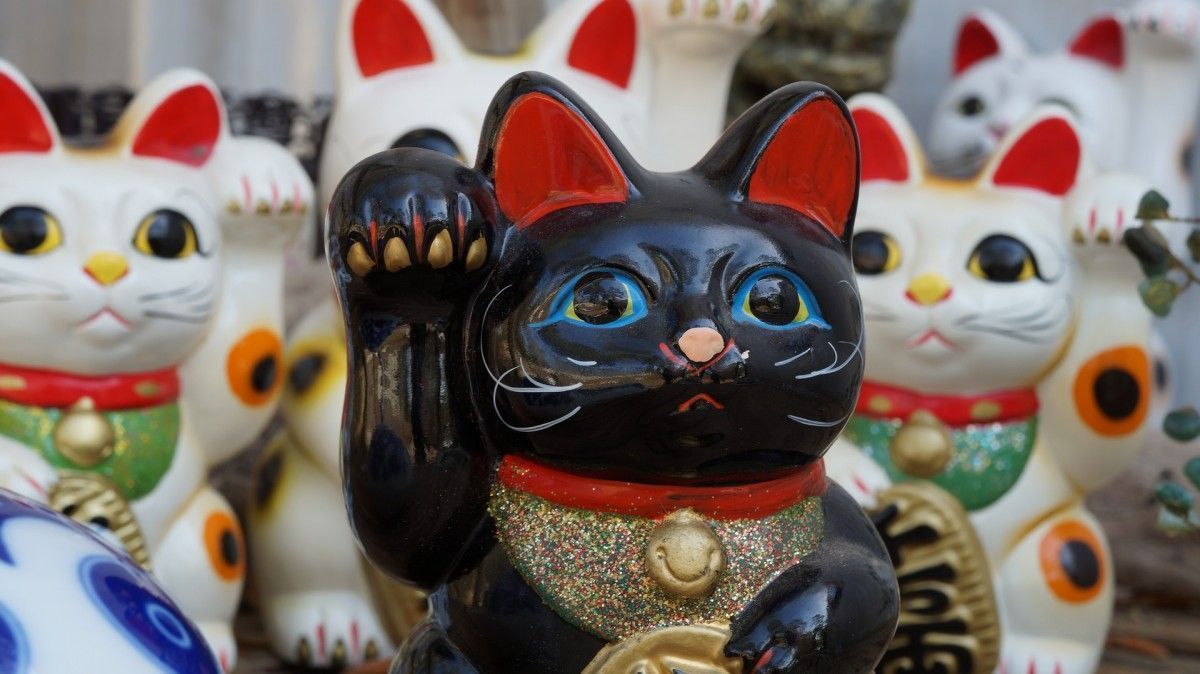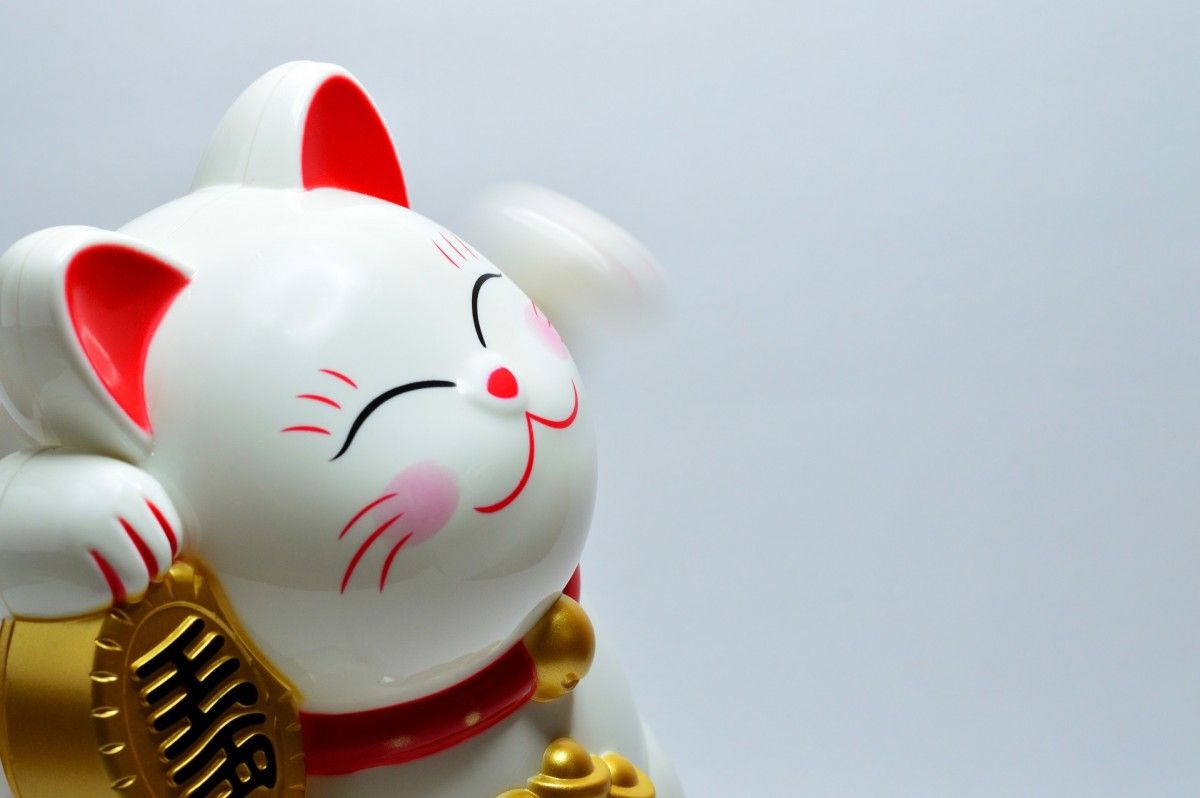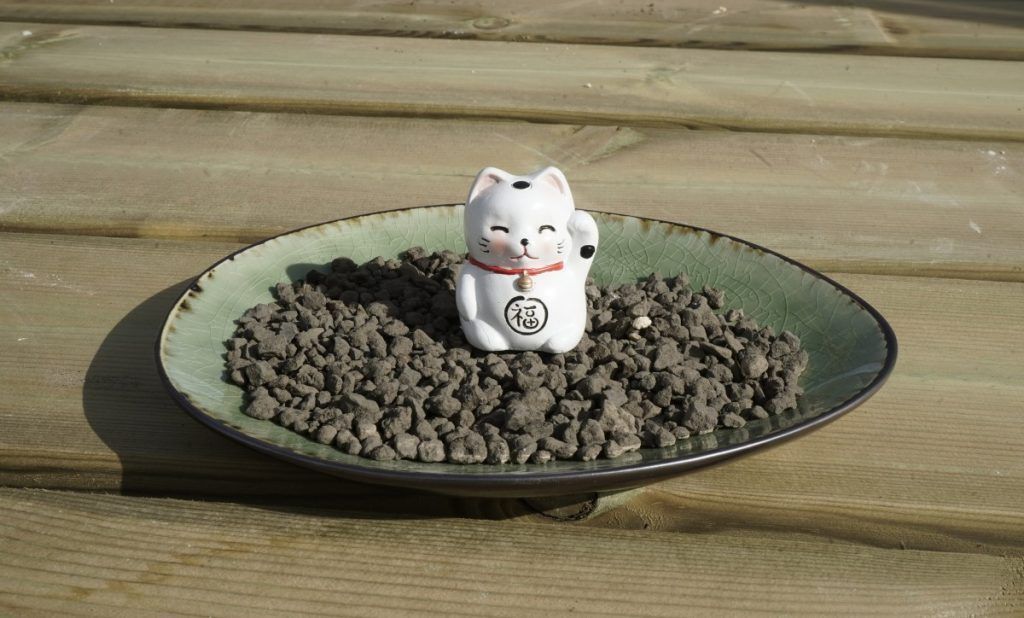Maneki-neko, the Japanese fortune cat

Maneki-neko is a fun cat figure (Japanese Bobtail), whose function is to bring good luck to both its owner and its business.
It is one of the most popular amulets in Japanese culture, although it became really popular in Chinese neighbourhoods around the world. For this reason, most people believe that this ‘lucky cat’ is originally from China and not Japanese. It is a much loved symbol in Japan, and is believed to call happiness, prosperity, success and money.
Story
Legend has it that, in the seventeenth century, in a ruined temple, lived a priest with his cat Tama. They had serious problems to get nourishments, and when they got them, they were shared between the two.
Li Naotaka, feudal lord of the time of great fortune and wealth, went hunting in a forest near the temple. Suddenly, a storm appeared and he had to take refuge under the shelter of a tree waiting for the storm to pass. Just then, at the temple door, he saw a white, black and brown cat. The cat beckoned with her paw to go to the temple. Surprised by that gesture he decided to go there, and just a few seconds later, lighting struck the tree. The cat Tama saved his life. Grateful, the feudal lord ordered the temple repaired and gave the monk rice fields and cultivation, thus allowing the prosperity and wealth of the temple.
Maneki-neko’s location
If you want the Maneki-neko to bring you good luck, the ideal place to locate it is overlooking the entrance of your home or business. From there it will exercise its function of bringing good luck and fortune. It should also be on a pad, a plate with rice or a banknote, so that it is not in direct contact with the surface. The Maneki-neko must be treated with respect.
Symbology and characteristics of the fortune cat
Usually the lucky Japanese cat has one of its paws raised at the height of its ear. With its palm forward he calls us to approach and enter the business. From his neck hangs a small bell, which drives away evil spirits, and with its other paw, grabs a gold coin, symbol of prosperity and fortune. The higher its paw is, the farther away it attracts good luck.
If the Maneki-neko has the left paw raised (which is the most common) it is the one that attracts customers, while if it lifts the right paw it attracts fortune and money.
Depending on their colour or the objects they hold, the Maneki-neko acquire different meanings. One of the most common is the white, black and orange Maneki-neko. It is said it is the one that attracts the most luck, but there are many colours:
- White Maneki- neko: It is so that “the purest” arrives, that all good things come to you; attract good things.
- Black Maneki-neko: To scare away and make bad luck disappear.
- Yellow Maneki-neko: It is the most common is stores, symbolizes money
- Blue Maneki-neko: For your dreams to become reality.
- Red Maneki-neko: to succeed in relationships, both current and in the future.
- Pink Maneki-neko: To choose or to come to you the person with whom you will spend the rest of your life.
- Green Maneki-neko: To succeed in everything you undertake.
Today you can also find them with ornaments:
- Holding a mallet: Attracts more money
- With a carp: It means good luck
- A jewel: Attracts wisdom and abundant money
Today this amulet can be found in different sizes, materials and designs; whether classic or modern, they are a fantastic gift.
You may also be interested in…
About the Author
Mistral Bonsai
In Mistral Bonsai we are a communication team, technicians and masters committed from the first day to disseminating the wonderful art of bonsai. A world that offers many things to share. We believe that a bonsai is a tree with a soul, unique and unrepeatable. Another of our most essential pillars is, how could it be otherwise, our close commitment to the preservation of the environment and nature.
Categories
Bonsai cultivation and care (60)
Bonsai gift (2)
Bonsai pests and diseases (7)
Bonsai repotting (3)
Bonsai species (1)
bonsai substrates (2)
Bonsai summer (1)
bonsai tools (1)
Bonsai work (13)
Ceramic pots (3)
Chinese culture (1)
Chinese culture (2)
Coniferous bonsai (2)
Conifers (1)


